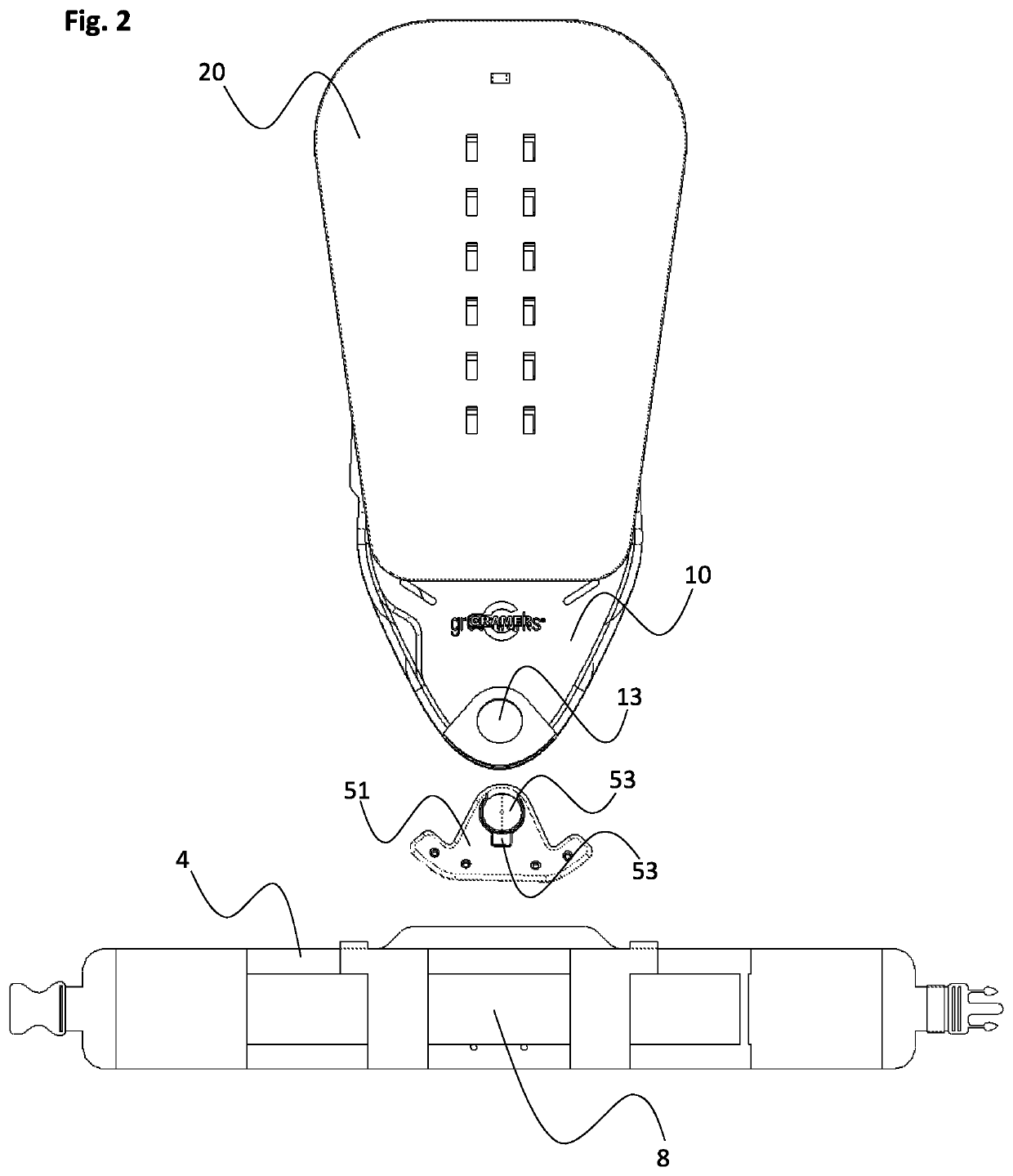Pivotal carrier assembly for a harness
a carrier and harness technology, applied in the field of harness carrier assembly, can solve the problems of affecting affecting the use of the harness for days on end, and straining the operator's body in the long run, so as to enhance the ergonomics of the harness and increase the freedom of movemen
- Summary
- Abstract
- Description
- Claims
- Application Information
AI Technical Summary
Benefits of technology
Problems solved by technology
Method used
Image
Examples
Embodiment Construction
[0022]In the following, a detailed description of a carrier assembly according to the invention is presented. In the drawing figures, like reference numerals designate identical or corresponding elements throughout the several figures. It will be appreciated that these figures are for illustration only and are not in any way to be seen as restricting the scope of the invention.
[0023]In the context of the present invention, the terms ‘front’ and ‘rear’ shall be interpreted in relation to the operator when wearing the harness including the carrier assembly. Thus, surfaces facing in the forward direction of the operator shall be designated rear faces and surfaces facing in the opposite, backward direction of the operator shall be designated rear faces.
[0024]FIGS. 1a and 1b show in perspective views the front and rear of an exemplary harness 1 for carrying a handheld, motor-driven power tool (not shown) of the kind described in the introductory portion, which may be used together with a...
PUM
 Login to View More
Login to View More Abstract
Description
Claims
Application Information
 Login to View More
Login to View More - R&D
- Intellectual Property
- Life Sciences
- Materials
- Tech Scout
- Unparalleled Data Quality
- Higher Quality Content
- 60% Fewer Hallucinations
Browse by: Latest US Patents, China's latest patents, Technical Efficacy Thesaurus, Application Domain, Technology Topic, Popular Technical Reports.
© 2025 PatSnap. All rights reserved.Legal|Privacy policy|Modern Slavery Act Transparency Statement|Sitemap|About US| Contact US: help@patsnap.com



